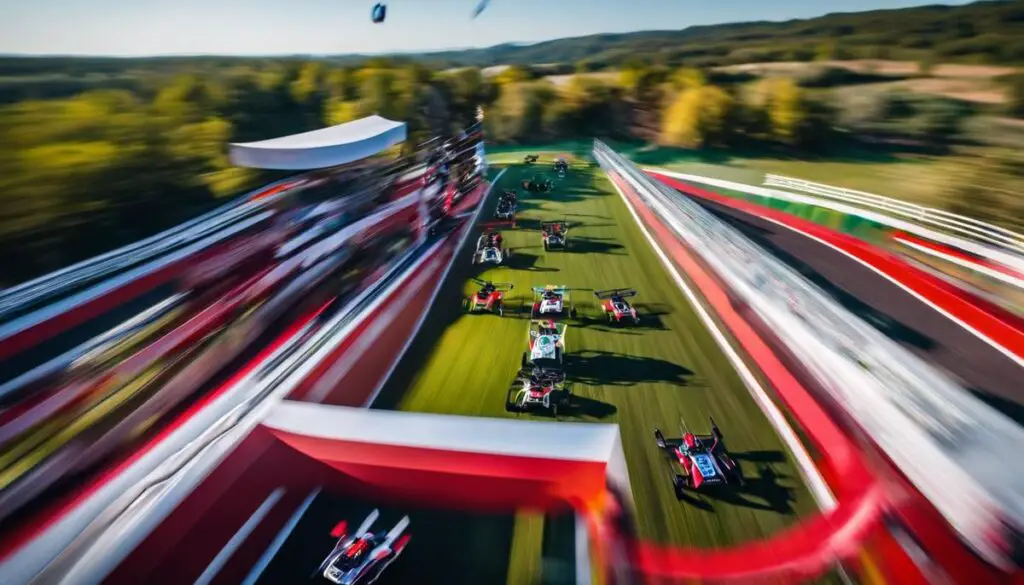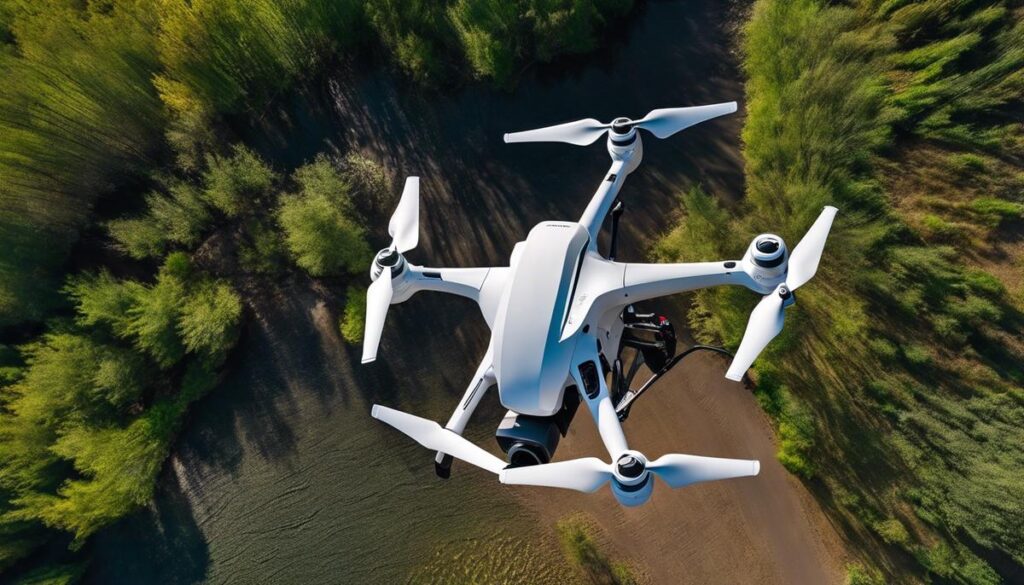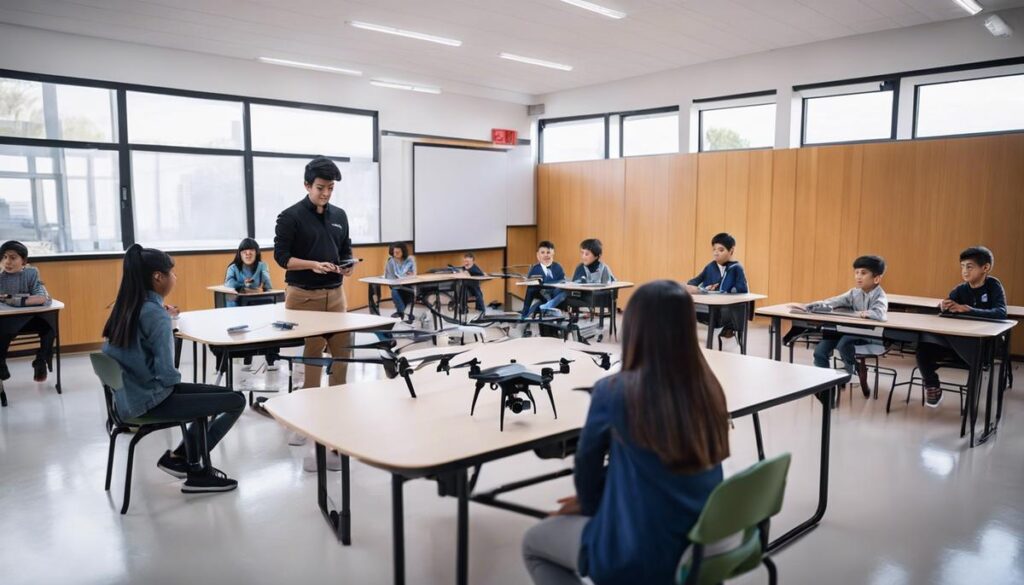In the electrifying arena of FPV drone racing, adrenaline pumps through the veins of pilots and the air hums with the whir of propellers. This groundbreaking pursuit merges the cutting-edge of technology with the primal thrill of competition, as participants don eye-goggles that stream live footage from cameras mounted on agile drones. The burgeoning sport has captured the hearts and imaginations of hobbyists eager to take flight in this immersive, high-speed chase. Whether you’re an intrigued newcomer or a seasoned fan, this essay will serve as your gateway to understanding the exhilaration and intricacies of FPV drone racing, guiding you through the rapid rise of this modern racing phenomenon.
Understanding FPV Drone Racing
Soaring High: The Thrilling World of FPV Drone Racing
Ever zoomed a paper airplane across the room and felt a pang of excitement as it took flight? Imagine that thrill multiplied by a hundred – that’s FPV drone racing for you! FPV stands for First-Person View, and it’s a sport that turns the sky into a high-speed racetrack, with pilots steering from the drone’s perspective.
So, how does FPV drone racing work? In this airborne adrenaline rush, pilots wear special goggles that show a live video feed from cameras mounted on their drones. It’s like sitting in the cockpit, but you’re actually safe on the ground. The goal? Fly your drone through a course of obstacles as fast as possible, without crashing.
Now, these drones aren’t your backyard toys; they’re custom-built for speed and maneuverability. They can zip, dip, and flip at speeds that can go over 60 miles per hour! Pilots need quick reflexes and a steady hand to master the art of FPV racing.
Getting started with FPV drone racing might seem daunting, but it’s all about taking it step by step. Begin with a beginner-friendly drone to get the hang of the controls. As skills improve, upgrading to more advanced models and building a custom rig becomes part of the fun. Just remember, practice is crucial – even the best pilots didn’t start out zipping through gates and dodging obstacles with ease.
Races can happen pretty much anywhere, from indoor halls to wide-open fields, giving each race its own unique set of challenges. Local clubs often host race days, which are great for both beginners and seasoned pilots to learn from each other and push their abilities to the limit.
Safety is key in FPV drone racing. Always check local regulations before flying, and never stray near airports or flight paths. A responsible pilot is a happy pilot.
The community around this sport is amazing, too. Pilots share tips, tricks, and build advice online and in person. The camaraderie at events is palpable, with everyone rooting for each other while pushing the limits of their flying skills.
If you’re looking for a hobby that combines technology, competition, and the sheer joy of flight, FPV drone racing might be your next passion project. Charge those batteries, strap on those goggles, and prepare for takeoff. The sky’s not even the limit here – it’s the starting line.
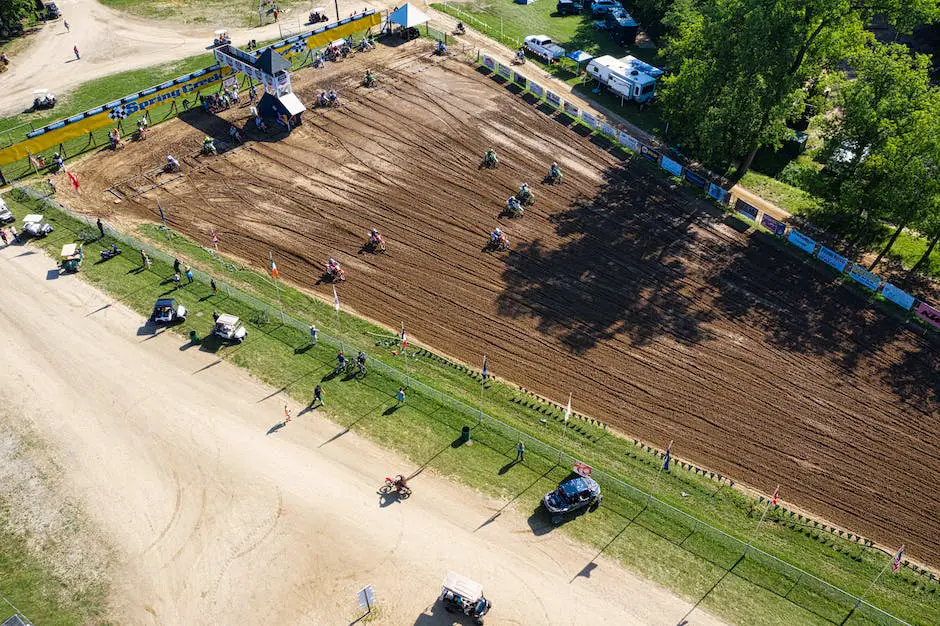
Getting Started in FPV Racing
Choosing Your First Drone and the Ins and Outs of Training
When diving into the mesmerizing world of FPV drone racing, picking a solid beginner drone is the first step to ensure a smooth lift-off into this exhilarating hobby. Look out for a model known for its stability and sturdiness—ideal qualities that forgive the inevitable crashes during those first shaky flights.
Once a drone buddy has been selected, it’s time to learn the ropes, and there’s no better starting ground than a quality flight simulator. This digital playground helps to get a grip on the controls without risking hardware. It replicates the flying experience, allowing the mastery of flips, rolls, and high-speed maneuvers from the comfort of a swivel chair.
After building confidence through the virtual skies, it’s on to the real deal. Those first few outdoor flights should always be in wide-open spaces, away from obstacles and bystanders. Starting with basic movements and gradually incorporating more complex tricks, patience is the co-pilot of progress.
No drone racer flies alone; local flying clubs are valuable hubs for honing skills. Mingling with other enthusiasts isn’t only a ton of fun but also leads to learning through shared experiences. Another set of eyes can offer tips that may not be obvious to the newcomer.
As control becomes second nature, it’s time to step up the training. Obstacle courses, whether DIY or through a local club, test and refine reaction times and maneuvering precision. This hands-on practice echoes the challenges faced in actual races and is a blast to boot.
Lastly, track etiquette can’t be overlooked. Understanding the flow of race events, respecting flight line boundaries, and mastering the art of clean competition are as important as the flying itself. With a good handle on these aspects, anyone’s ready to dip their toes into the race pits.
Armed with knowledge, flying skills, and a passion for speed, FPV drone racers set the sky ablaze. The thrill of the race awaits!
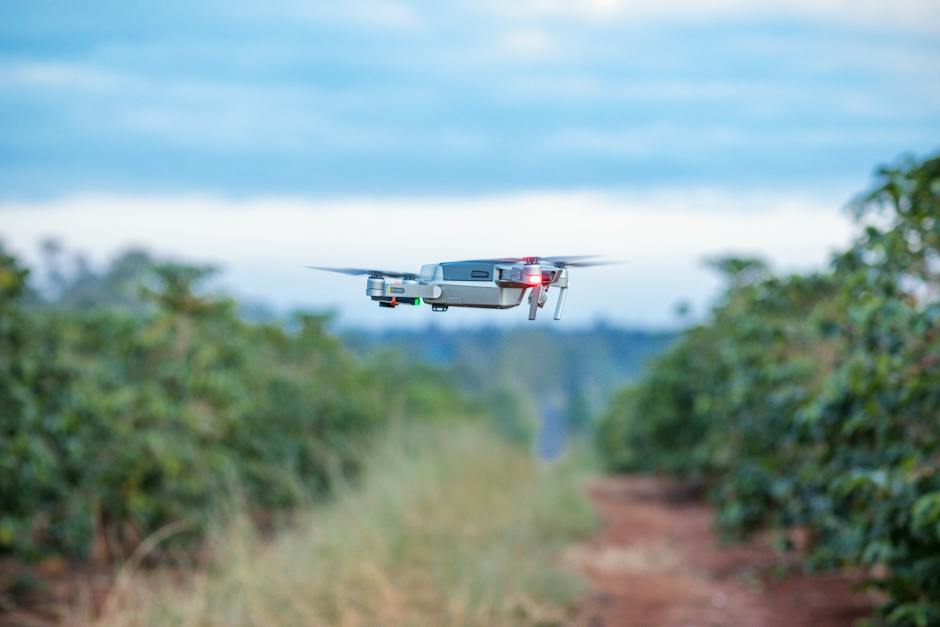
Building and Customizing Racing Drones
Building and Customizing a Competitive Racing Drone
Taking drone racing from a fun pastime to a competitive edge means knowing the ins and outs of your gear and how to tweak it for top performance. Here’s what serious racers need to focus on:
Frame Material and Weight: The starting block for a competitive racing drone is selecting the right frame. A balance between strength and weight is key. Carbon fiber is a favorite for its lightness and durability. Every gram counts, as it affects speed and agility, so think minimal but sturdy.
Power-to-Weight Ratio: Speed is the name of the game, so the power-to-weight ratio is crucial. This means having powerful motors that can lift the drone easily. Higher kV ratings in motors translate to more revolutions per minute, but remember to pair them with suitable electronic speed controllers (ESCs) that handle the rapid pace without overheating.
Battery Life and Weight: The battery must walk the fine line between providing enough power for maximum punch and not being too heavy. Lithium polymer (LiPo) batteries are top picks for their energy density. Choose the highest milliampere-hour (mAh) with the highest discharge rate, ‘C rating’, without going heavy.
Propeller Choice: Propeller size and pitch determine thrust and speed. Racing drones often use smaller propellers for quicker responses. Experimenting with different props can optimize lift and forward motion without draining the battery too fast.
FPV Camera and Video Transmission: A clear view is non-negotiable. Low-latency, high-resolution FPV cameras paired with reliable video transmitters ensure you see where you’re going – crucial for those split-second decisions during a race.
Tuning and Flight Controller Settings: This is where customization truly shines. Through the flight controller, tweak settings to align with your response preferences and race style. Adjusting parameters like PID (Proportional, Integral, Derivative) can make or break your control over the drone. Use software to test different setups to find what suits best.
Practice, practice, and more practice: Knowing your custom build is invaluable. Spend time adjusting to its nuances. Every change, from prop size to battery position, affects performance. Test each variation methodically. It’s not just about flying; it’s about flying that specific machine as if it’s an extension of yourself.
Remember, in drone racing, the small adjustments can lead to big victories. There’s no one-size-fits-all strategy; it’s a process of continual improvement and adaptation. So, grab that controller, tweak those settings, and let the races begin!
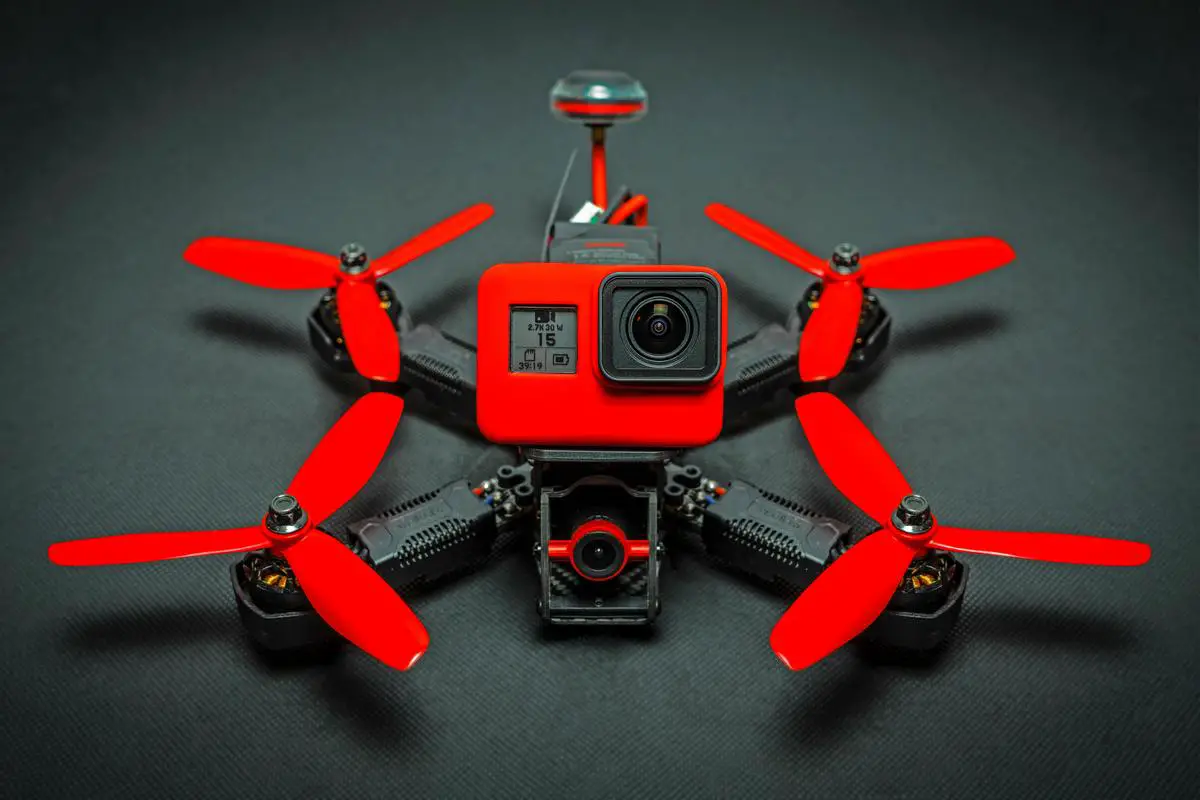
Photo by felixberger on Unsplash
Mastering FPV Racing Skills
Piloting Precision and Split-Second Decisions: Mastering FPV Drone Competitions
Amid the hum of buzzing propellers and the lively banter of pilots, FPV drone competitions are a thrilling arena where only the skilled and well-practiced flourish. To ascend the ranks in such a dynamic sport, enthusiasts must focus on refining certain capabilities. Here, let’s soar right into the essential skills to conquer the skies of FPV drone racing.
First up, quick reflexes are a pilot’s best friend. Drone racing is not just fast; it’s lightning-fast, and pilots must react in a split second as they navigate through air gates and around obstacles. Like fine-tuning an instrument, sharpening reflexes comes through hours of flying, creating a natural sync between hand, eye, and drone.
Spacial awareness, too, plays a pivotal role. Pilots must understand their drone’s position in relation to the course and its elements at all times, all while maintaining high speeds. This skill often distinguishes rookies from ace racers and can be the difference between crashing out or crossing the finish line.
Strategic planning cannot be overlooked. Each race course is a unique puzzle, and finding the most efficient path through it is crucial. That means analyzing turns, figuring out where to speed up or slow down, and knowing the intricacies of the track. Mastering a course takes study and strategy, a mental map that guides pilots to victory.
Consistency is the name of the game. Showing up and performing well at a single event is one thing, but the top competitors are those who fly at their best race after race. It’s all about finding a rhythm and groove with flying that can be repeated under varying pressures and conditions.
Customization savvy is a gamechanger. Modifying drones to suit specific race conditions and personal flying style can provide an edge. Familiarity with tech specifics lets pilots tweak their machines to peak performance. It’s akin to a race car driver knowing every inch of their car; a drone racer must do the same with their drone.
Lastly, racing mindset can’t be left at the starting line. Amidst the adrenaline high, pilots must stay focused, calm, and adaptive. Overcoming setbacks like a bad start or a mid-race collision separates those who merely participate from those who dominate. A winning mindset includes resilience and the mental agility to keep pushing when the going gets tough.
In FPV drone racing, there’s no resting on laurels. Pilots continually adapt, learning from every heat and every competitor. It’s this pursuit of aerial prowess that keeps the propellers spinning and the hearts racing. So, engage those thrusters, stay sharp, and maybe you’ll find your name etched on the leaderboard, high above the rest!
Fly smart, fly fast, and may the best pilot win!
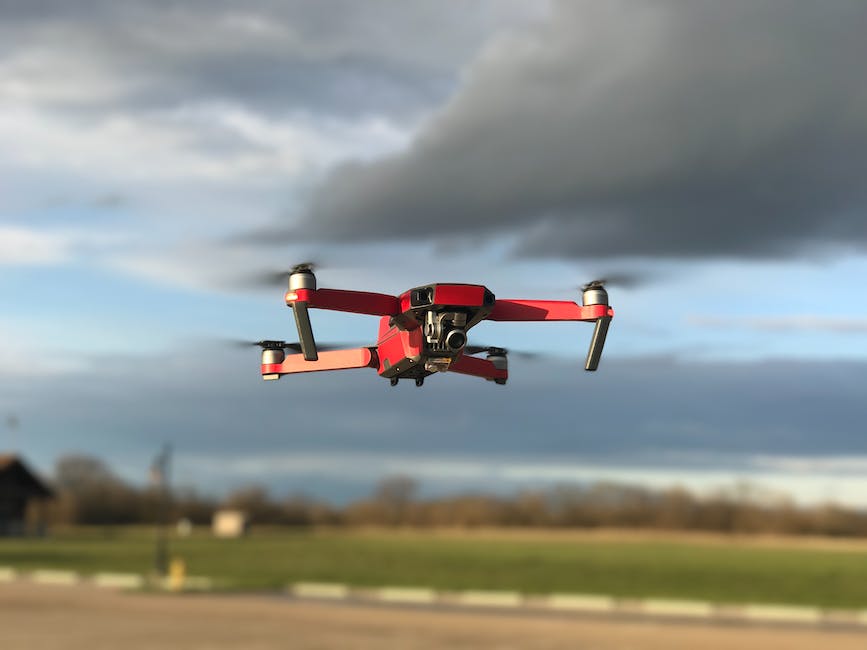
FPV Racing Competitions and Community
The Competitive Edge in FPV Racing: Strategies and Mindsets for Success
Welcome to the pulse-pounding world of FPV drone racing! You’re now set up with the basic know-how, you’ve picked out your gear, and you’re ready to transition from hobbyist to competitor. But what does it take to not only participate but excel in the competitive scene? Let’s dive into the strategies and mindsets that can set you apart from the pack.
Strategic Approach to Racing
When drones take flight on the racecourse, each moment can decide victory or defeat. A pilot with a strategic approach has an edge. This means studying the race locations ahead of time, understanding each turn, and knowing where you can push the limits or where you might need to play it safe. Each track is different, and your adaptability could make or break your success.
Quick Reflexes and Spatial Awareness
FPV racing isn’t just about the tech in your hands; it’s about how fast you can think and react. Pilots with razor-sharp reflexes can navigate the twist and turns of a course like it’s second nature. Similarly, keen spatial awareness helps pilots avoid collisions and shave precious seconds off their lap times.
Aiming for Consistency
Consistency is key in FPV racing. In practice, it’s not always about having a solitary, perfect lap. It’s about replicating your success lap after lap, race after race. This consistency builds confidence and reliability in your performance.
The Customization Game
No two drones are exactly alike, and this is where customization plays a pivotal role in competitive FPV racing. Every racer has a unique style, and customizing your drone allows it to become a seamless extension of your racing technique. Whether it’s adjusting the center of gravity or fine-tuning the electronic speed controllers, these details can provide you the competitive edge you strive for.
Embrace the Racing Mindset
Entering a competition requires a different frame of mind than casual flying. It involves focus, determination, and the will to succeed. In the racing mindset, pilots must remain calm under pressure, make quick decisions, and stay mentally engaged with every twist and turn.
Continuous Learning and Adaptation
The learning never stops in FPV racing. Each flight is a lesson, and every race can teach something new. Savvy pilots analyze their flights, learning from missteps and celebrating the wins. Staying humble and open to new techniques, gear, or advice is how racers continue to grow and keep up with the evolving sport.
Final Words
With your equipment dialed in and your skills sharpened, it’s your approach to the sport that will define your place in the competitive FPV racing scene. It’s about more than just gears and propellers; it’s about the heart-pounding excitement of the race, the strategies employed, the connections with fellow racers, and the never-ending pursuit of improvement. See you at the starting line!

The journey through the dynamic world of FPV drone racing culminates in a landscape where skill, technology, and community converge into a harmonious symphony of high-octane delight. As drones zip through gates and around obstacles, it’s not merely the quest for victory that energizes pilots but also the shared passion and communal growth that the sport fosters. Whether you’re at the sticks during a heated race, tweaking your build in the garage, or cheering from the sidelines, you’re part of an avant-garde movement where every flight strengthens bonds and pushes the envelope of possibility. Embrace the challenge, cherish the community, and soar to new heights in the thrilling escapade that is FPV drone racing.

